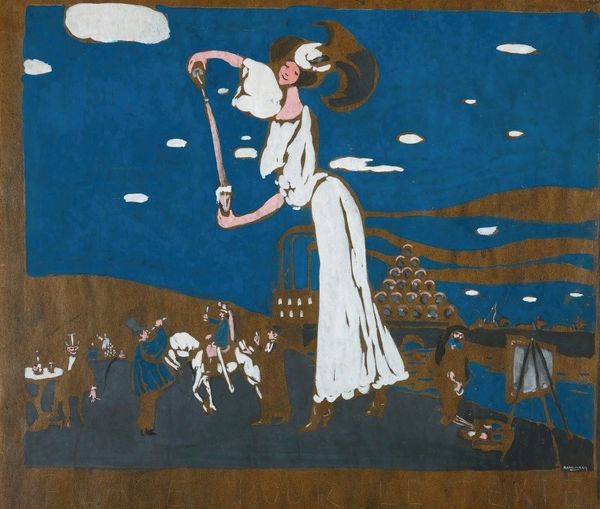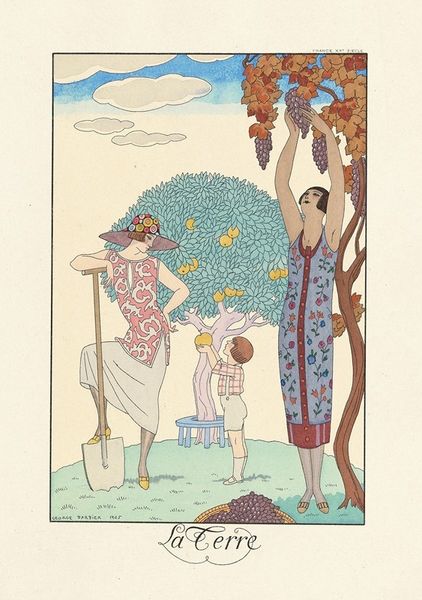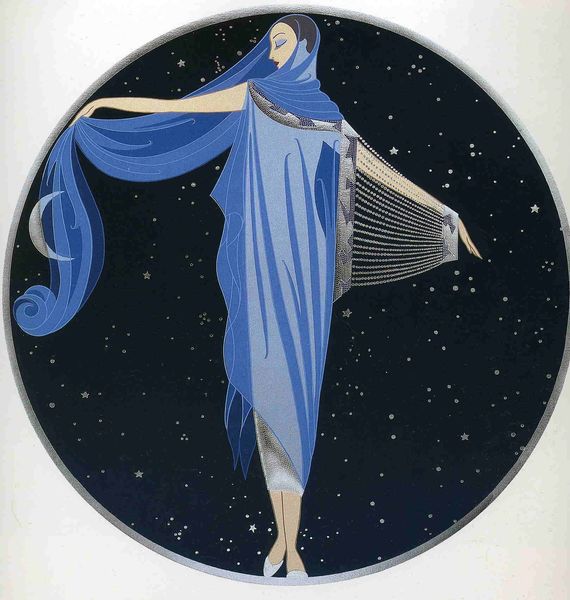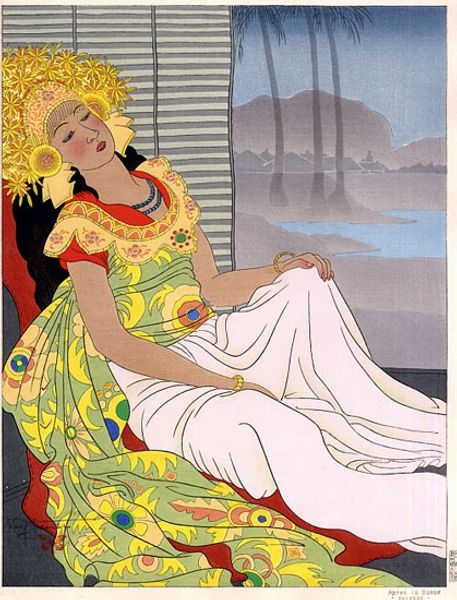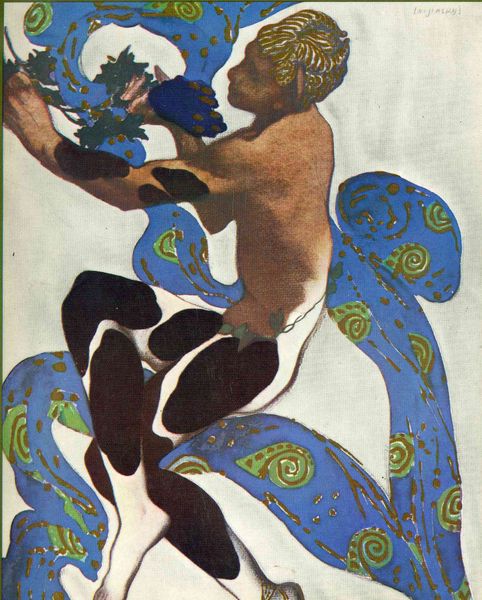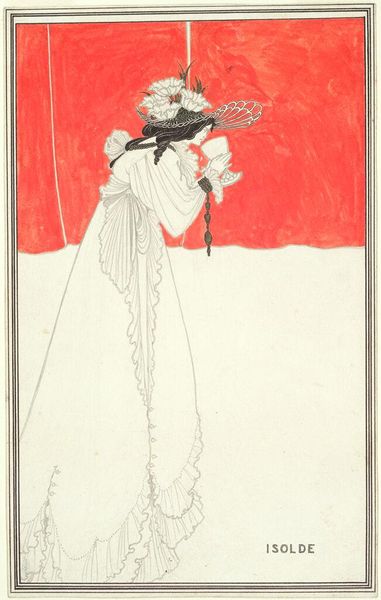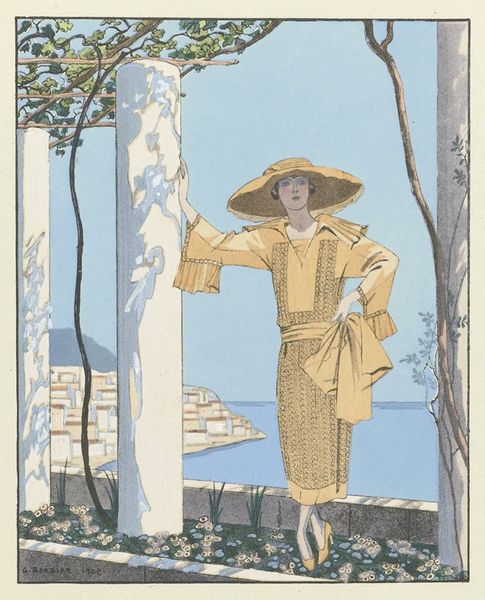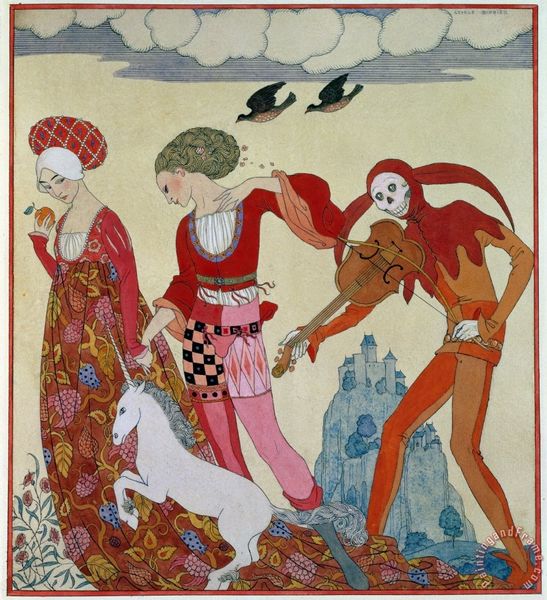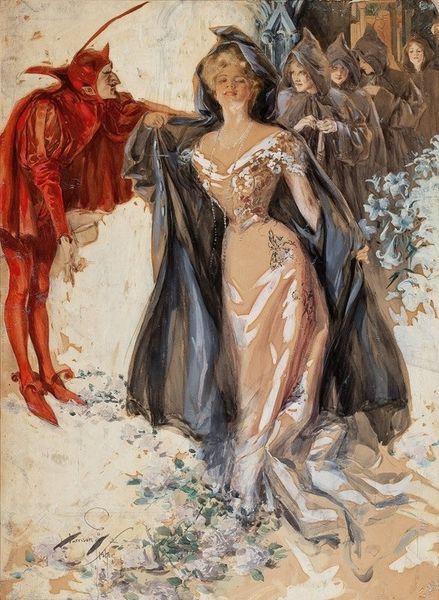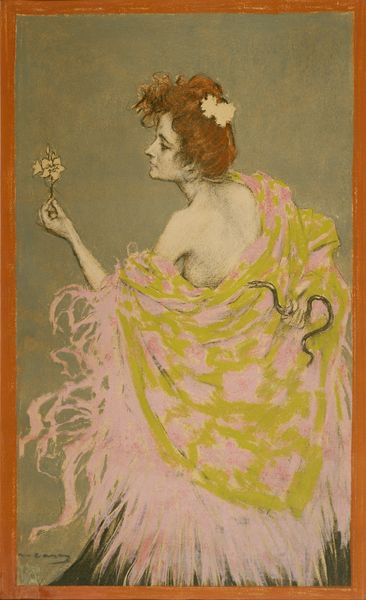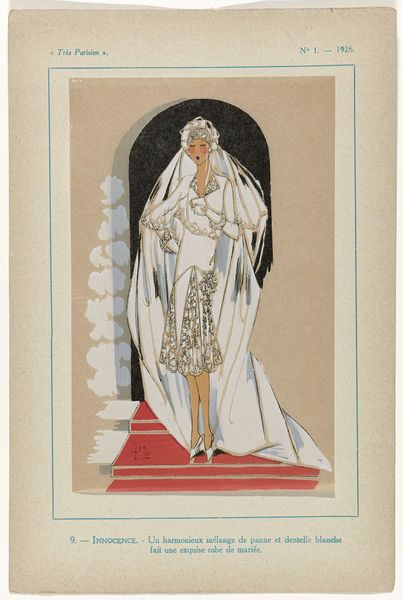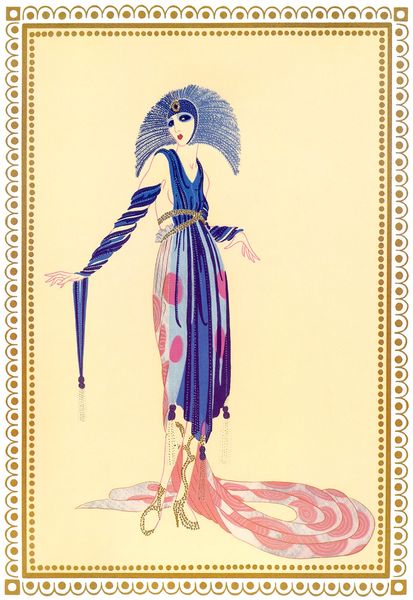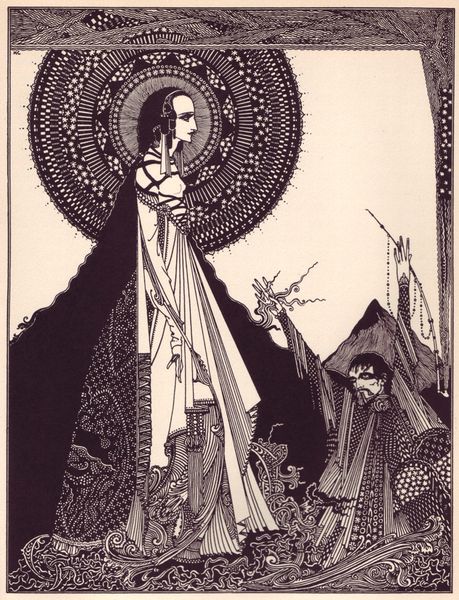
tempera, painting
#
portrait
#
figurative
#
tempera
#
painting
#
landscape
#
caricature
#
figuration
#
symbolism
Copyright: Public Domain: Artvee
Curator: Here we have Wassily Kandinsky's tempera painting, "The Night," created in 1903. Editor: My first impression is of a theatrical staging; the exaggerated proportions and symbolic imagery create a dreamlike tableau. Curator: Absolutely, Kandinsky was deeply invested in Symbolism at this time. Looking closely, consider the subject—a monumental female figure—within the context of fin-de-siècle anxieties surrounding femininity and power. Is she a romanticized figure or something else? Editor: I'm struck by the contrast in textures—the flowing fabric versus the more solid forms of the buildings in the background. There's also an interesting use of material, particularly in the application of the tempera, creating depth and almost a velvety quality to the dark backdrop. Curator: Tempera afforded Kandinsky an interesting flatness that contrasts with the traditional techniques he learned in Munich. It speaks to a moment when artists were actively interrogating not only representation, but the historical association of particular media. The choice emphasizes flatness, which underscores a symbolic reading. What statements about power do you suppose Kandinsky intended to convey here? Editor: I'm more interested in what kind of labor went into the crafting of this piece and the availability of materials in Russia at the time. I also wonder, given the size and cost of the painting, where would it be seen? Curator: These considerations inevitably point us back to issues of power and patronage; in those parameters we understand what types of narratives and perspectives might have found purchase in elite social circles. Editor: By studying the process we can examine the economy around this artwork and its place in early modern aesthetics. I think considering material helps avoid the usual traps around readings of gender and other subjective narratives. Curator: I see the intersection there. Ultimately, considering all of this we reveal the many facets of a singular object that allows us a unique insight into the sociopolitical context. Editor: Agreed, and through close examination of "The Night", it's possible to uncover how materiality, labor, and consumption impacted the art of the early 20th century.
Comments
No comments
Be the first to comment and join the conversation on the ultimate creative platform.
